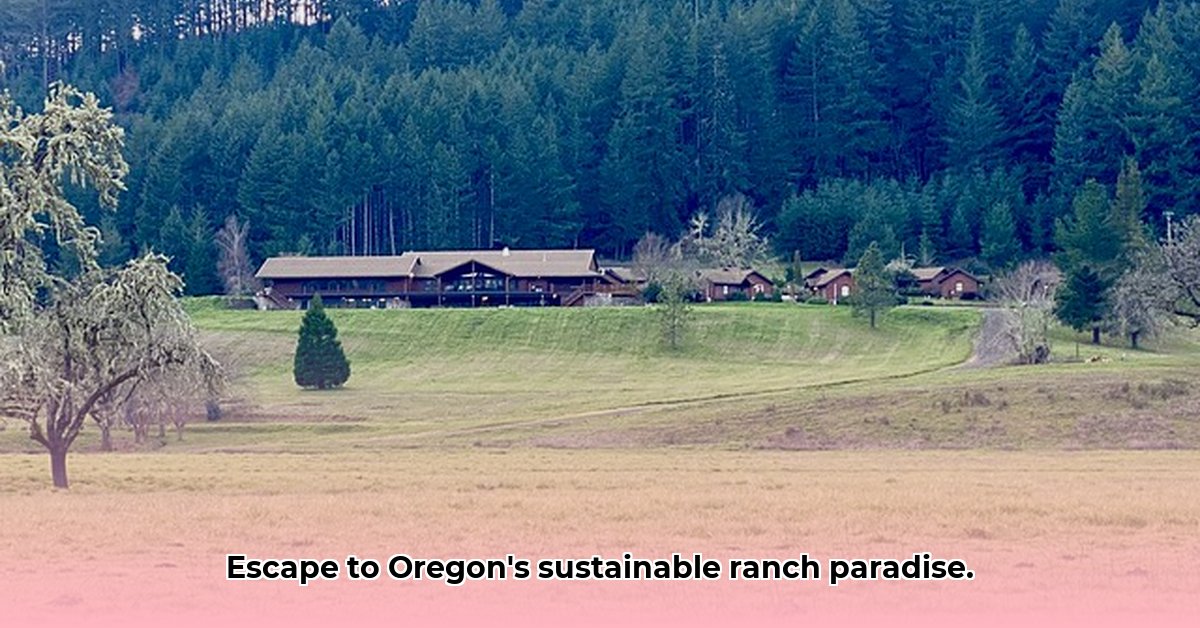
Big K Guest Ranch: Balancing Luxury and Sustainability in Oregon
Imagine waking up to the breathtaking vista of Oregon's high country, the crisp mountain air invigorating your senses. Big K Guest Ranch, nestled on 2,500 acres with ten miles of pristine river frontage, promises just that. But this idyllic escape presents a complex question: can luxury tourism coexist with environmental responsibility? This in-depth analysis examines Big K's sustainability efforts, identifying both strengths and weaknesses, and offering actionable recommendations for a truly sustainable future.
Background: A Sprawling Oregon Oasis
Big K Guest Ranch offers a range of accommodations, catering to both large corporate events and intimate getaways. Its vast size, however, presents a significant challenge: managing its environmental impact while maintaining its appeal. Currently, marketing focuses on amenities and guest experience; a detailed public accounting of its sustainability efforts is lacking. This assessment aims to fill that gap, providing a clear picture of Big K's environmental footprint and potential for improvement.
Sustainability Assessment: A Critical Examination
This section analyzes various aspects of Big K's operations, assessing their environmental impact based on available information. Robust data and transparent reporting are paramount for accurate evaluation.
Waste Management: Minimizing the Footprint
Does Big K boast a comprehensive recycling program? What about composting? The absence of detailed public information on waste management practices hinders a complete assessment. A robust system reducing landfill waste and maximizing resource recovery is crucial, and its current effectiveness needs clarification. A simple metric, like the percentage of waste diverted from landfills, would be a powerful indicator of progress.
Water Conservation: Preserving a Precious Resource
Oregon's water resources are precious. How diligently does Big K monitor and manage its water usage? Are water-efficient fixtures and irrigation techniques in place? Does the ranch actively track and strive to reduce water consumption per guest? Water conservation should be a cornerstone of its operations, especially given the potential strain of accommodating multiple guests.
Energy Efficiency: Powering Sustainability
A critical aspect of sustainability is minimizing energy consumption. Does Big K utilize renewable energy sources (solar, wind)? What energy-efficient technologies are deployed across the ranch? Quantifiable data on energy usage and reduction strategies, combined with a commitment to renewable energy, are essential for gauging its performance.
Sustainable Sourcing: Supporting Local Communities
Does Big K prioritize locally sourced food and supplies? This approach reduces transportation emissions and strengthens the local economy. Transparency in its supply chain, detailing the origin of goods and services, is a key indicator of its commitment to sustainable practices.
Stakeholder Analysis: A Shared Responsibility
Big K's sustainability (or lack thereof) affects multiple stakeholders.
- Management: Leadership's commitment to sustainability is paramount. A clear vision guiding environmental practices is critical.
- Guests: Educating visitors about responsible tourism practices empowers them to make conscious choices.
- Local Community: Supporting local businesses, hiring local residents, and contributing to community initiatives foster positive relations.
- Environmental Groups: Their expertise and feedback are vital in identifying areas for improvement and ensuring alignment with best practices.
Risk Assessment and Mitigation: Proactive Management
Proactive risk management is crucial for long-term sustainability.
| Risk Factor | Likelihood | Impact | Mitigation Strategies |
|---|---|---|---|
| Negative environmental impact | Medium to High | High | Comprehensive sustainability audit, robust environmental management plan, regular monitoring. |
| Over-tourism stress on resources | Medium to High | Medium | Visitor limits, promoting off-season visits, dispersed activities, educational programs. |
| Negative community impact | Low | Medium | Community engagement initiatives, local hiring, transparent communication, local sourcing. |
| Reputational damage | High | High | Publicly accessible sustainability report, engagement with stakeholders, response to concerns. |
Regulatory Compliance: Adhering to Standards
Big K must comply with all applicable Oregon environmental regulations. However, exceeding minimum requirements through proactive sustainability initiatives demonstrates a true commitment to responsible tourism.
Recommendations: A Path to Sustainable Excellence
Big K can strengthen its sustainability profile through concrete actions:
- Comprehensive Sustainability Audit: An independent audit establishes a baseline and identifies areas for improvement.
- Public Sustainability Report: Transparent reporting builds trust and accountability.
- Guest Education Programs: Educate guests about responsible travel and environmental stewardship.
- Community Engagement: Invest in local partnerships and support community initiatives.
- Renewable Energy Transition: Invest in and transition to renewable energy sources.
- Water Conservation Enhancements: Prioritize water-efficient technology and practices.
Conclusion: A Vision for Sustainable Tourism
Big K Guest Ranch possesses the potential to become a model for sustainable tourism in Oregon. By embracing transparency, proactive environmental management, and a strong commitment to community engagement, it can transform its idyllic setting into a truly responsible and sustainable destination. The future of sustainable tourism hinges on such responsible approaches. The success of Big K demonstrates not only the profitability of such endeavors but the importance of their impact on the landscape and the community.